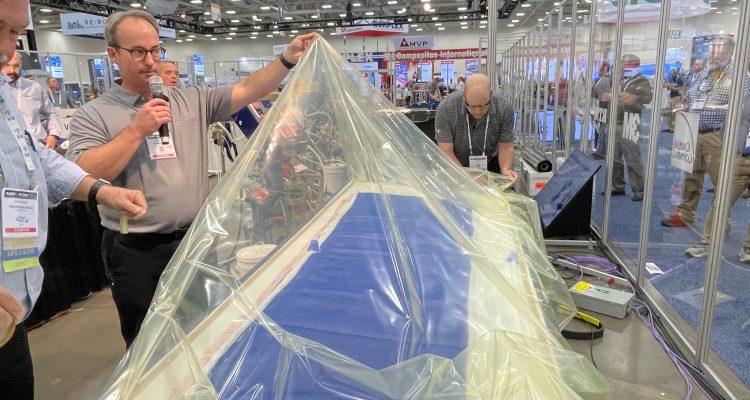Boat hulls and wind blades may be the first applications that come to mind when people think about vacuum infusion processing (VIP). But other markets aside from marine and wind energy have turned to the fabrication method to create products – including high-profile ones like Postcards: A 9/11 Memorial.
Located in Staten Island, N.Y., the memorial honoring the borough’s residents who were killed in the September 11 attacks and the 1993 World Trade Center bombing features two free-standing, 40-foot-high walls that resemble wings. The soaring white walls were originally designed in concrete, but the architect and engineers switched to GFRP to build strong, curved panels that could withstand wind and salt water.
The memorial is just one example of what’s possible with VIP, also referred to as resin infusion. The manufacturing process gained prominence in the 1990s, when TPI Technology patented the Seeman Composites Resin Infusion Molding Process (SCRIMP). That technology was invented to meet demanding requirements for U.S. Navy projects. Since then, companies have turned to VIP, a closed-mold process that uses vacuum pressure to infuse resin into the laminate, for everything from trains and ballistic panels to swimming pools and industrial parts.
“Resin infusion has been around for decades, but the industry keeps improving and enhancing materials,” says Ashley Duncan, product and applications specialist at Polynt Composites USA Inc.
A Bevy of Benefits
Vacuum infusion processing offers numerous benefits, many of which are well established. VIP delivers high-quality, more consistent parts compared to open molding. But there are also trickle-down advantages that are less recognized.
“Because the resin content goes down, the fiber ratio goes up with vacuum infusion. The fibers are now doing all the work, which makes the parts a lot stronger,” says Belle Blanding, manager of the Diab Application Center. “That allows people to consider sandwich technology, where they might not have in the past. Ultimately, that makes a lighter, stronger product.”
Part consistency stems from the high control afforded by the vacuum infusion process, which can’t be achieved with open molding processes. Industry veteran and consultant Andre Cocquyt recalls working with a large boat builder years ago that was initially skeptical about VIP.
“They claimed they could control their open molding process within 5% of rough hull weight,” says Cocquyt. “But when I convinced them to perform an audit and weigh a number of hulls, they never got below 10% difference in average weight. If you have a 10,000-pound hull, that’s 1,000 pounds.”
The company switched to VIP, and the variation initially averaged between 100 and 250 pounds with new technicians learning on the job. Cocquyt adds that with experienced technicians, the average difference can drop to 25 to 50 pounds on a 2,000-pound hull.
There’s another benefit to consistency, says James Jones, lead technical support manager at Composites One. “When parts are more consistent, later down the line in assembly they go together more easily,” he says.
But perhaps the most notable advantage of VIP is an improved working environment, which checks off a couple of priorities in today’s business climate.
“An improved working environment in the plant helps companies attract a more stable, higher quality workforce and leads to better employee retention,” says Duncan. “VOC and HAP emissions are virtually eliminated when using closed mold processes compared to open mold spray-up, which could help companies reduce regulatory costs.”
Another benefit of VIP, reduced mold cycle times, also has workforce implications that grab the attention of companies striving for lean operations.
“With open molding, you work against a clock on the resin gel time, so you can see a part with eight or 10 people rolling out fiberglass,” says Jones. “In resin infusion, you might be able to make that part with two people.”
The Evolution of VIP
While vacuum infusion processing is a mature technology, there’s still room for advancements.
“Changes in the market are more of an evolution than a revolution,” says Jones. “There are newer reinforcements with higher permeability and flow. There are different process materials – for instance, combination products where you combine peel ply release film and the flow media, which reduces the labor to install and remove it.”
Suppliers have developed other products to overcome one of the challenges of VIP – creating a Class A finish.


